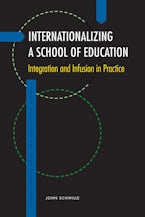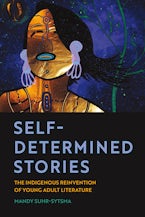Internationalizing a School of Education examines how Michigan State University has pursued internationalization and globalization through an integration-infusion approach to research, teaching, and outreach. The integration-infusion approach was introduced in MSU’s College of Education in the early 1980s as a replacement for the more disconnected comparative education program. This approach offers a vision where all faculty members and students are knowledgeable about education in all its international diversity, where their conceptions and aspirations are influenced by international research and experience, and where they reach out to other countries in collaborative efforts to do research, inform policy, and improve practice. Featuring profiles of faculty members and students who were leaders of this integration-infusion approach, this text provides a survey of the landscape of comparative education in the United States while examining channels of internationalization specific to MSU, highlighting the success of integration-infusion at an institutional level.
ContentsPrefaceAcknowledgmentsIntroductionPart 1. The Landscape of Internationalization in U.S. Schools of EducationChapter 1. Toward a Sociology of Comparative and International EducationChapter 2. Differing Approaches to Comparative and International Education in Schools of EducationChapter 3. The Changing Landscape of Internationalization in a New Era of MSU HistoryPart 2. Convergent and Divergent Channels of InternationalizationChapter 4. Faculty to Develop and Explore the Main Channels of InternationalizationChapter 5. Creating and Benefiting from New Channels of International ResearchChapter 6. Building New Channels for International Development WorkChapter 7. The Fragility of International Partnerships Needed to Feed Channels of InternationalizationChapter 8. Preparing the Ground for Channels of International Content and World Languages in K–12 and Teacher EducationChapter 9. Engaging Internationally Oriented Students to Create New Channels and Broaden Existing OnesChapter 10. Two Streams Less Connected with the Main Channels of InternationalizationChapter 11. International Visiting Scholars, a Source of Internationalization That Could Exceed Expectations but Often Did NotChapter 12. Finding Enough Money and Support Staff to Feed and Expand ChannelsChapter 13. Connecting to the Channels of Other Institutions through the CIESChapter 14. Summing UpAppendix 1. Development of International Strengths among MSU College of Education Faculty, 1984–2012Appendix 2. Thirty-Two International Books Authored or Edited by MSU College of Education Faculty, 1994–2012Appendix 3. Timeline: MSU Integration-Infusion Policy in PracticeNotesReferencesIndex



